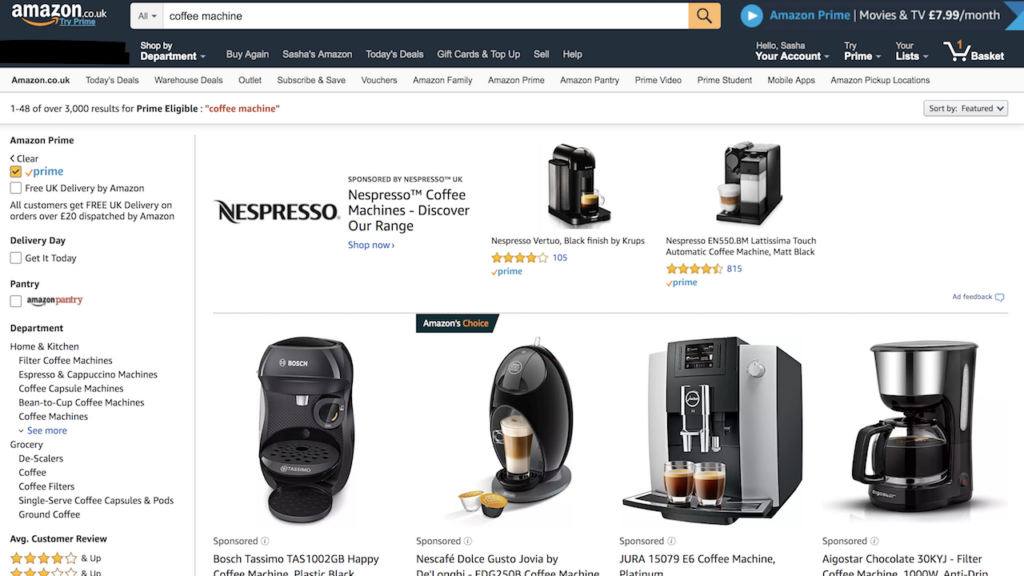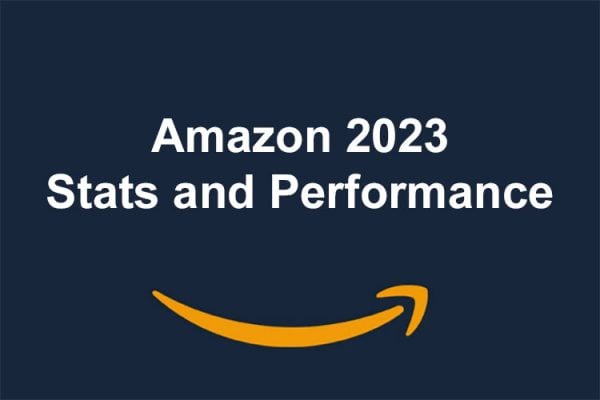Amazon Advertising relies heavily on balance. It is key to find the balance between automatic and manual campaigns, between overspending and wasting budget and between granularity and efficiency, says new report The top 5 mistakes amazon advertisers should avoid by Feedvisor.
The report looked at the mistakes sellers should avoid when advertising on Amazon. It says that the absence of a sophisticated Amazon Advertising strategy leads to a loss of conversions and valuable spend.
1.Using the same strategy for all campaigns
According to the research, the most immediate mistake sellers can make with their Amazon ad placements is applying the same business strategy to all of their campaigns.
Before sellers begin a new campaign, they need to outline the specific goal they want to accomplish.
Examples of advertising strategies include:
- Profit maximisation: Optimising the per-product profits based on sellers’ advertising cost of sale (ACoS) targets
- New product launch: Generating demand and exposure
- Liquidation: Selling out all relevant end-of-life inventory
- Targeted acceleration: Increasing sales and order volume
- Brand awareness: Protecting brand by regulating exposure and ad domination
2.Performing hasty keyword research and ignoring negative keywords
Making rash keyword decisions
The report puts down the poor ad performance to the irrelevance of keywords. A prime example of this would be targeting obvious, generic search terms, which would unlikely boost potential sales and pay a premium.
Sellers need to choose specific keywords that are relevant to their products. The more specific merchants get, the more likely it will be that their keywords drive high-value traffic of consumers looking for their exact product.
.Neglecting negative keyword harvesting
Negative keywords have the potential to be the sellers’ Amazon pay-per-click (PPC) competitive advantage. Sellers who harvest them can decrease their overall advertising costs without decreasing visibility and conversions for relevant prospects.
For example, if a merchant is selling wine glasses and bidding on the word “glasses,” with broad or phrase match, someone could type in eyeglasses and their ad could still populate. If they accidentally click on the seller’s ad, they will be charged for a click. Sellers need to add and subtract negative keywords as often as necessary to avoid paying for unrelated clicks that do not lead to revenue.
3.Underutilising or overusing automatic campaigns
Merchants should find a balance between overusing and underutilising automatic campaigns. These campaigns should be used to gather data and keyword information that sellers can then plug into their manual campaigns to make them more efficient.
A combination of manual and automatic campaigns will optimise keyword harvesting for sellers’ ads and ensure comprehensive coverage on relevant search queries. Sellers are more likely to discover keywords that are converting, as well as keywords that should be marked as negative by using both types of campaigns – because they are either underperforming or irrelevant to their product and are generating unnecessary PPC costs.
4.Not knowing metrics
Looking at the wrong metrics, looking at the right metrics incorrectly, or not analysing metrics at all are definitive ways to waste ad spend and not fully understand the investment and the impact it has on sellers’ performance.
Sellers should consistently examine their search terms and conversion metrics to understand where their ad spend is going.
Impressions
Ad impressions are valuable because they measure how often ads are served for the search terms triggered by shoppers. Impressions generated do not outwardly indicate success, as they do not reveal how many people found the ad effective. However, if sellers’ have a high impression share for their keywords, they can feel confident that their exposure is high.
Cost-per-click (CPC)
This metric measures how much a merchant paid for the clicks their ads generated. As a seller, their aim is to defeat competitors for ad positions with their bid, but they only pay the next highest bid price.
Click-through rate (CTR)
This is a key metric for campaign performance that varies based on the type of keyword at hand. The formula for click-through rate is the number of clicks divided by the number of impressions.
Conversion rate (CR)
Conversion rate shows how many customers purchased a seller’s product. The formula for conversion rate percentage is the number of conversions the campaign received divided by the total number of clicks.
Advertising cost of sale ACoS
The advertising cost of sale is used by Amazon to measure advertising efficiency. It indicates the ratio of ad spend to sales and tells a merchant how well their ads are performing relative to their spend. The formula for calculating ACoS is advertising spend divided by ad sales, multiplied by 100.
5.Not leveraging data and technology
Sellers who take advantage of a solution that enables holistic campaign management can interpret better how their overall sales correlate to their ad performance. They can also use data to make strategic decisions that affect other aspects of their business, such as advertising less to decrease their sales velocity if inventory is low, or vice versa. The technology will also save sellers’ time, particularly if they have an extensive catalogue.











One Response
Useful article but you should consider hiring a new proof reader. “Accountable Care Organisations???”